Several large Canadian pipeline projects are continuing to move through the approval process in the face of mounting opposition.
Although there have been setbacks, industry lobby groups are aggressively pushing back against arguments that their projects aren't compatible with action on climate change.
Keystone XL was rejected by U.S. President Barack Obama, prompting a lawsuit. Trans Mountain is facing fierce opposition from environmentalists and indigenous leaders in B.C.. The Energy East hearings derailed after a National Observer report detailed private meetings between review panelists and a TransCanada consultant, former Quebec premier Jean Charest.
The latest development came Tuesday when proponents of Enbridge's Northern Gateway pipeline said they will not appeal a Federal Court of Appeal decision in June to quash Ottawa's approval of the $7.9-billion project. The federal government then announced it won't appeal, either. The court had ruled the approval must be set aside because government had failed in its duty to consult with aboriginal people.
And on the land of two First Nations in Canada — the Mohawk in Montreal and the Musqueam in Vancouver — Indigenous nations across North America signed a historic pan-continental treaty alliance on Thursday against oilsands expansion in their traditional territory.
The signatories want to block all proposed pipeline, tanker, and rail projects affecting First Nations land and water. Those include TransCanada's Energy East pipeline, Kinder Morgan's Trans Mountain expansion, and two Enbridge projects — the Line 3 pipeline replacement and Northern Gateway.
As opposition mounts, here's an update on the status of all major LNG and oil pipeline projects in Canada.
Northern Gateway

Enbridge's Northern Gateway pipeline would ship 525,000 barrels per day of oilsands crude from northeast of Edmonton to Kitimat, B.C.. Its goal is to sell Alberta crude to Asian markets. A parallel line would bring 193,000 bpd of toxic bitumen-thinning diluent in the opposite direction.
Northern Gateway has been hugely controversial. The idea of crude-oil laden supertankers navigating the choppy waters of the Douglas Channel on their way out to the Pacific is a non-starter for many British Columbians. The line also crosses tracts of unceded First Nations territory in B.C., which has many aboriginal groups — especially on the coast — staunchly opposed to it.
Until the June court decision, Enbridge held a federal permit to build Northern Gateway, granted in mid-2014. On Tuesday, the company urged the federal government to meet its constitutional obligations to meaningfully consult with First Nations and Metis to get the project back on track.
Energy East
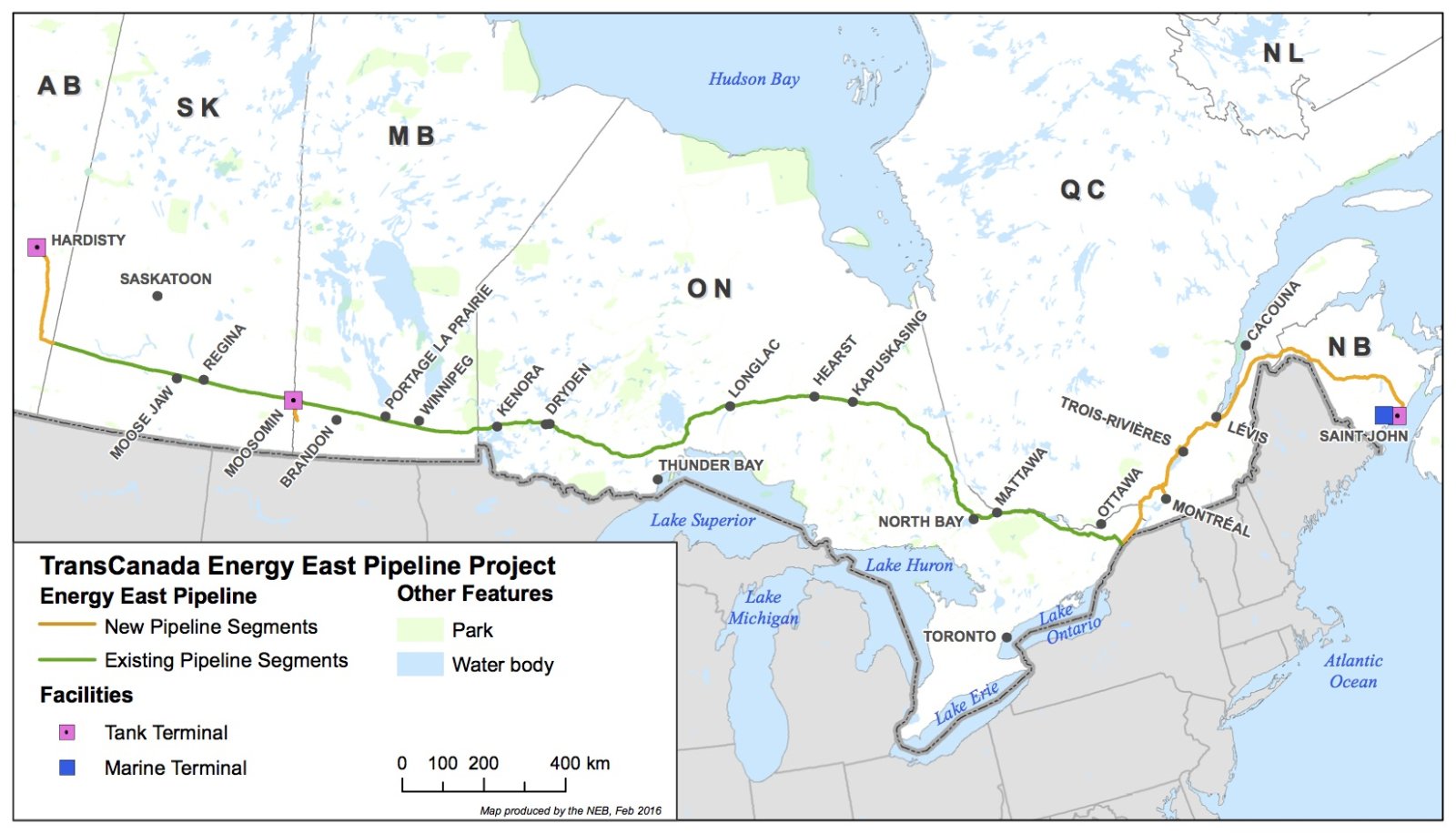
TransCanada Corp., the same company behind Keystone XL, applied to the National Energy Board in October 2014 to build the Energy East Pipeline. The $15.7-billion project aims to ship 1.1-million barrels of Alberta crude a day across six provinces and 4,600 kilometres.
The pipeline would supply crude to import-dependent eastern refineries, as well as export landlocked Alberta oil to Europe and India. Energy East would repurpose existing natural gas pipe for about two thirds of the route and build new pipe through Quebec and New Brunswick.
Three days of National Energy Board hearings were held in August in Saint John, but hearings in Montreal the following week were postponed and then cancelled after protesters disrupted proceedings. They accused panellists of bias after reports published by National Observer revealed that two of them had met privately in January 2015 with former Quebec premier Jean Charest, a consultant for TransCanada Corp. at the time.
In early September, the three-member panel recused themselves. NEB chief executive Peter Watson and vice-chair Lyne Mercier gave up their responsibility to appoint a new panel, instead leaving the job to the government. Natural Resources Minister Jim Carr has said the promised 21-month review process for Energy East could be "modestly" delayed as a new panel is chosen.
TransCanada says construction would begin shortly after approval, with the goal of shipping oil in 2021.
Keystone XL
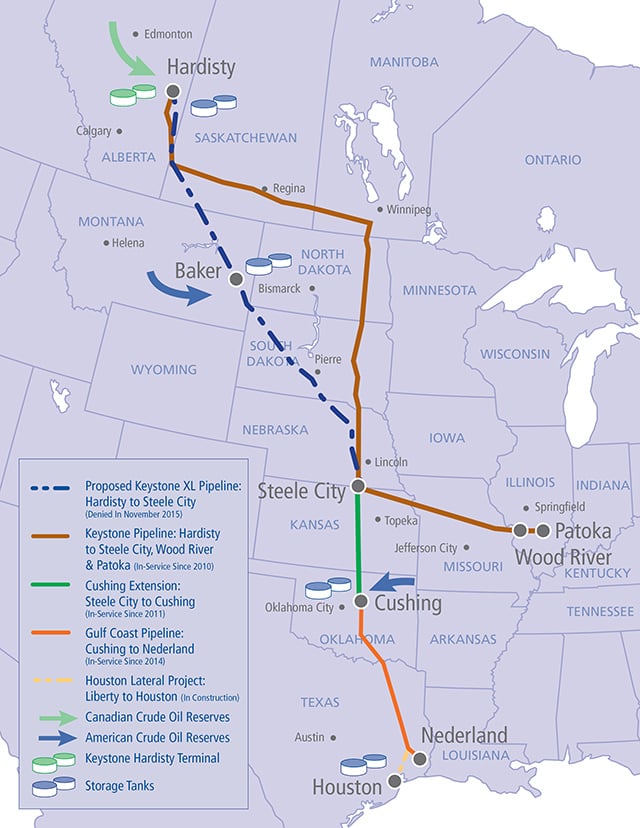
TransCanada applied for U.S. permission to build its Keystone XL pipeline in September 2008. The idea was to extend an existing cross-border pipeline to give oilsands crude a more direct route to U.S. Gulf Coast refineries.
At the time, TransCanada thought the XL segment would make its way through the regulatory process just as smoothly as the previous phases. It was wrong.
The stretch of pipe cutting a diagonal line from the Saskatchewan-Montana border to southern Nebraska became the focal point of the environmental movement. Debate over Keystone XL centred not only on the environmental impacts on the American Heartland in the event of a spill, but on its broader role in hastening climate change.
After a seven-year regulatory saga, U.S. President Barack Obama rejected Keystone XL last November. Now, TransCanada has set in motion a US$15-billion challenge under the North American Free Trade Agreement, arguing it was treated inequitably. It has also launched a separate federal lawsuit seeking a declaration that Obama overstepped his constitutional power.
Trans Mountain
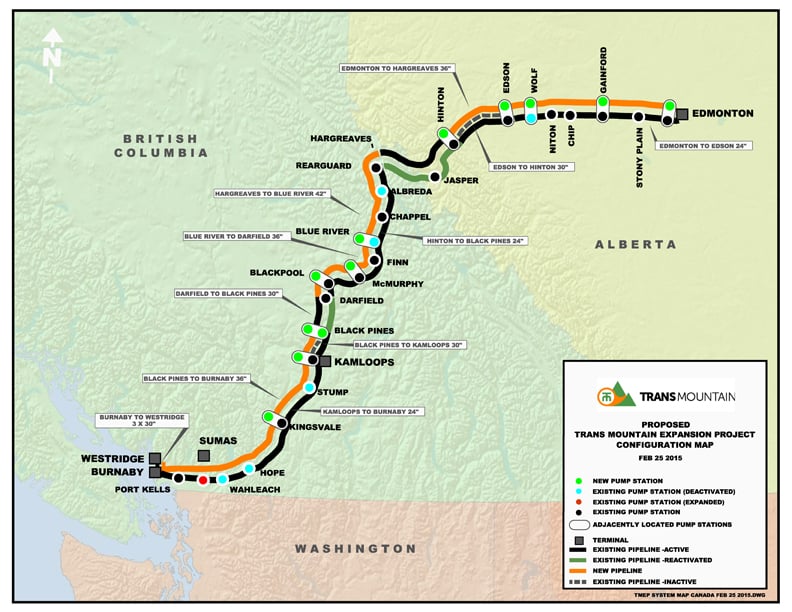
The Canadian arm of U.S. energy giant Kinder Morgan is aiming to nearly triple the capacity of its Trans Mountain pipeline to 890,000 barrels of oil per day. The existing Trans Mountain line currently has capacity to ship 300,000 bpd of various petroleum products from the Edmonton area to the B.C. Lower Mainland and Washington State.
The $6.8-billion project has faced stiff opposition from those who don't want to see more crude-filled tankers moving through the Burrard Inlet. Protesters held up survey work on Burnaby Mountain late last year.
Kinder Morgan filed its regulatory application for the Trans Mountain expansion in late 2013. The National Energy Board hearing process for Trans Mountain has been highly criticized, with commenters and intervenors withdrawing from the process. The board has issued 157 draft conditions that Kinder Morgan must meet if the project is to be approved, and the company says that's achievable.
In November, a report is due from a three-person federal review panel doing indigenous consultations. The federal government has vowed to decide whether or not to approve Trans Mountain before the end of December.
Pacific Northwest LNG

The $36-billion Pacific Northwest LNG project is a liquefaction and export facility and pipeline on northeast British Columbia's Lelu Island. Led by Malaysia's state-owned energy giant Petronas, the controversial project — which is still awaiting federal approval — would export B.C. LNG to Asian markets and would add an estimated $2.9-billion annually to Canada's GDP. Petronas also estimates that, if approved, the project would generate up to 4,500 jobs during peak construction.
The Pembina Institute claims that the project could become the largest source of carbon emissions in Canada and that its construction would "seriously undermine" Canada's commitment to emission reduction targets set in Paris late last year. If constructed, Pembina says the single project would take up as much as 87 per cent of B.C.'s 2050 allowed emissions under the provinces legislated target.
Construction would take around four years, with Petronas hoping to start exporting LNG to Asia by 2020 to 2021. A decision is expected in early October following a final report from the Canadian Environmental Assessment Agency.
But this project is also facing some controversy due to recent reports of turmoil at Petronas, the Malaysia state energy company that is the lead shareholder of the project. The Vancouver Sun reported this week about a "jaw-dropping" audit showing that Petronas was "struggling with major safety and structural problems in its Malaysian offshore operations."
Eagle Mountain-Woodfibre gas pipeline and LNG facility
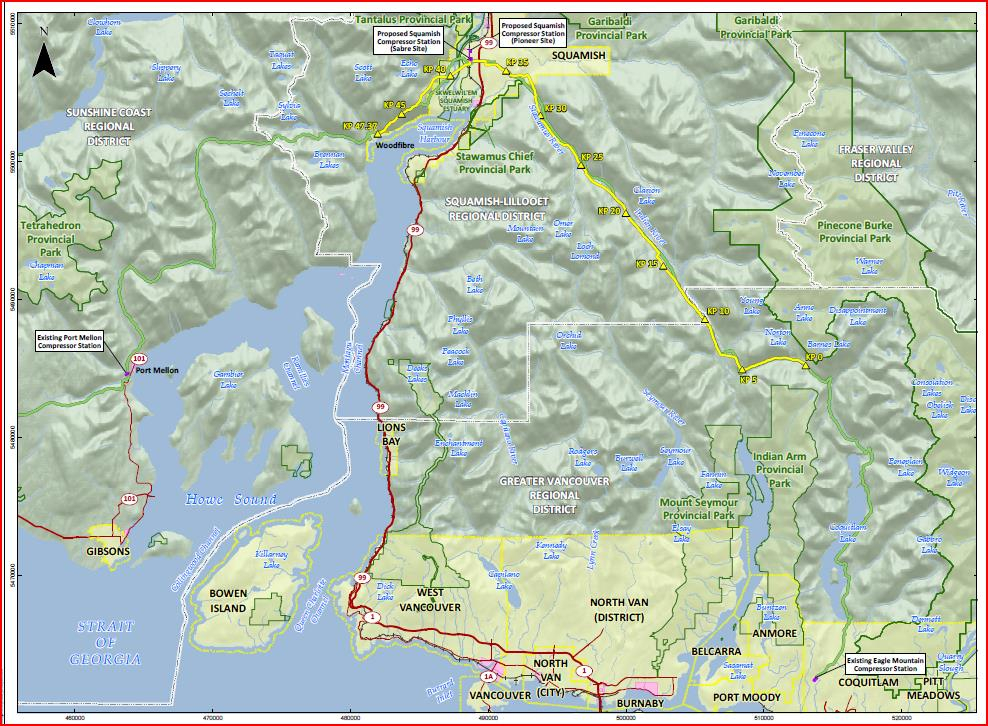
Woodfibre LNG Limited is currently awaiting a final investment decision on its LNG processing and export facility just outside of Squamish, B.C. housed in the former Woodfibre pulp mill facility.
The $1.6-billion project received the federal stamp of approval earlier this year when Environment and Climate Change Canada said that the project is "not likely to cause significant adverse environmental effects." Opponents of the project criticized the Trudeau government for approving the project, citing dangers to local aquatic wildlife and broken election promises to reduce greenhouse gas emissions.
Woodfibre LNG Limited estimates that the facility could export around 2.1-million tonnes of LNG per year to markets in Asia.
The provincial government also gave environmental approval to FortisEnergy B.C.'s Eagle Mountain-Woodfibre Gas Pipeline project, which would see an additional 47 kilometre pipeline built to transport natural gas from Vancouver Island to the Woodfibre facility outside Squamish.
Line 9B

Enbridge obtained regulatory approval for its Line 9B reversal and expansion project in March 2014. The original Line 9 has been in the ground for four decades and had been running from Montreal to southwestern Ontario since 1998. But given shifting market dynamics, Enbridge decided to restore its flow to its original west-to-east configuration.
That would enable crude to get to Quebec refineries, like Suncor Energy's facility in eastern Montreal. The project also involves boosting the line's capacity to 300,000 barrels a day from 240,000 barrels.
Work on the project has been complete since the fall of 2014. The National Energy Board gave its blessing to start Line 9B last year and it is currently operational.
Line 3
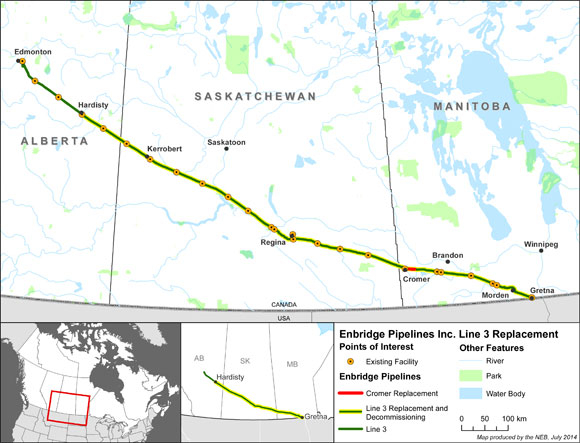
Enbridge received approval from the National Energy Board to expand and modernize its aging Line 3 pipeline on April 25, 2016. The replacement project, described as the Calgary-based pipeline company's largest, is expected to double the amount of crude piped from Alberta to Superior, Wisconsin to 760,000 barrels per day. The company will spend $7.5-billion to replace the 50-year-old pipeline infrastructure, nearly doubling the pipeline's carrying capacity.
Although it already has presidential approval — the stamp that Keystone XL never received — Enbridge recently pushed its expected completion date back to 2019 due to other regulatory restrictions in the U.S.
-With files from Elizabeth McSheffrey and The Canadian Press's Dan Healing.
-Correction: An earlier version of this story claimed that the Trans Mountain pipeline would cost $5.4-billion and had 149 draft conditions placed upon it by the NEB. Its actual estimated cost is $6.8-billion and it has 157 conditions it must meet before the federal government approves the pipeline.
This report was made possible thanks to reader subscriptions. Please subscribe today.

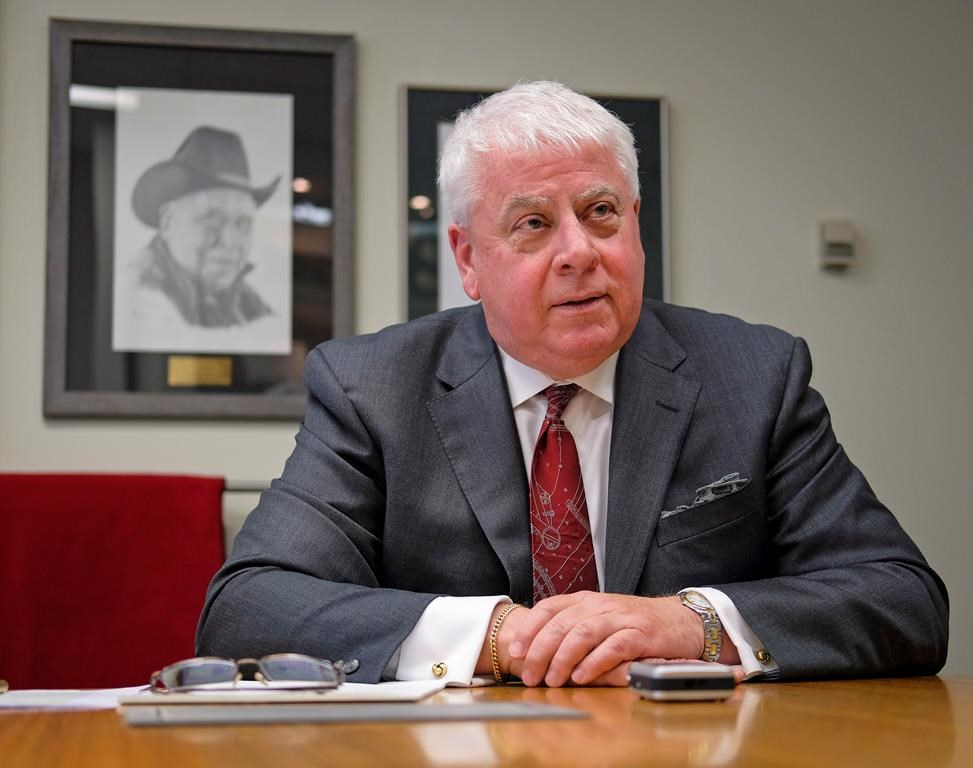

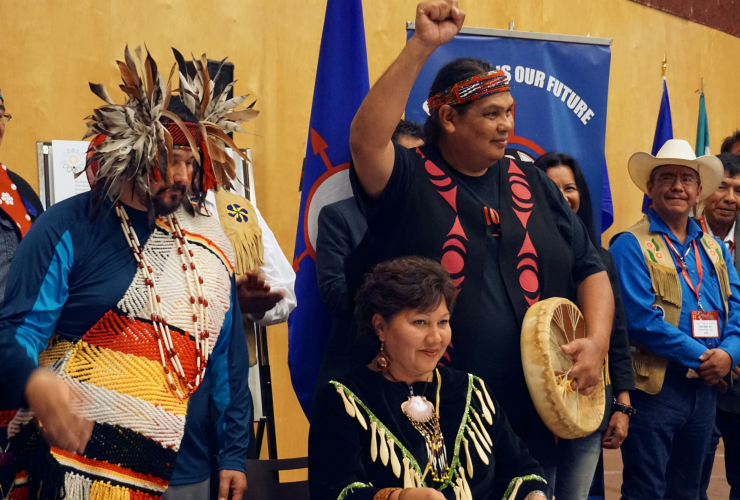

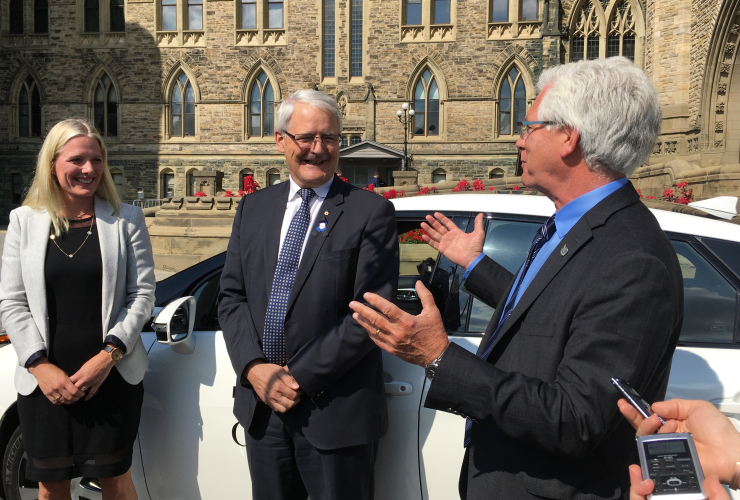

Comments